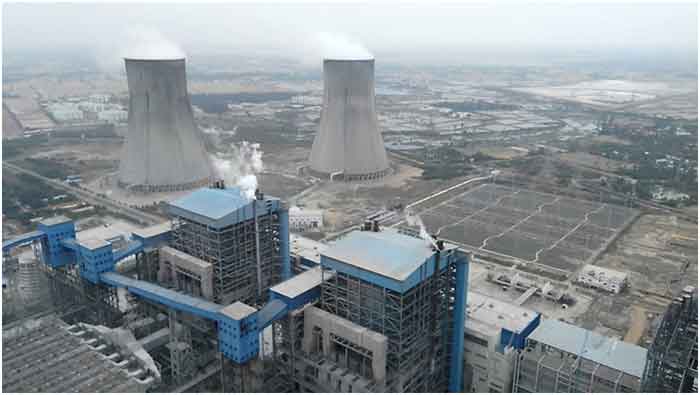
As Meena Raman, from the environmental group Friends of the Earth Malaysia, said at a press briefing last week, “Offsetting is no longer a solution. It has to be real zero. And it should have been real zero yesterday.”
Promise now, deliver later
Another problem is how many countries are planning on reducing their emissions in the next decades, rather than this one. The greenhouse gas emissions cuts that nations have laid out in their NDCs fall into two categories: short-term (by 2030); and long-term (by 2050 for developed nations and by 2060 for developing nations).
What matters most is that these short-term emissions cuts are made this decade. But most of last week’s good news was based on long-term commitments, which gives the nations making those pledges over a decade before they can be held accountable for failing to meet their emissions goals.
At a press briefing, Professor Niklas Höhne, of the NewClimate Institute, one of the two organizations who put out the Climate Action Tracker report, said “We now have more than 140 governments announcing net zero targets that cover more than 90 percent of global greenhouse emissions. And at first sight, that’s positive news. If we then assume that all of these countries indeed meet their net zero targets, then we calculate a temperature increase by the end of the century of 1.8 degrees.”
That, said Höhne, is the optimistic scenario. But it is not a likely one. “It’s not time to sit back and relax,” he added. “Because not a single country has short-term policies in place to put itself on track towards its own net zero targets. Right now, the net zero targets are a good vision but they have to be backed by short-term action otherwise, otherwise they are simply not credible. And that’s also where this COP has moved only a small step forward. We still have a huge gap. Assuming all countries implement everything they have proposed here, we would still emit twice as much as we should in 2030 compared to if we want to be on a 1.5 pathway.”
If one takes into account only the short-term targets that the nations participating in COP26 have made for 2030, temperatures would rise by 2.4 C. If one looks at their existing (not promised) policies and actions, temperatures will increase to 2.7°C. “All countries have to go back and rethink what they can do,” Höhne said. “And the only way to do that is to go into emergency mode. Governments have to do something substantially different.”
Given this urgency, developing nations are calling for NDCs to be reported every year instead of every five years, a demand that was included in the draft text published on Wednesday morning, and to develop even more ambitious short-term actions. “The key issue for us is not net zero targets in 2050 particularly for the rich world,” said Meena Raman. “Net zero by 2050 is too little, too late, particularly for the rich world.”
On Tuesday morning, at a press conference held by the Republic of the Marshall Islands, Tina Stege, Climate Envoy for the Marshall Islands expressed similar sentiments: “I think we need to see folks coming back on commitments in 2022. For these things to have impact and make sense you have to start next year. The decade of action is now.”
More than just a COP problem
This use of the term “net zero” to delay action is not unique to COP 26. A report from Corporate Accountability published last month and titled “The Big Con: How Polluters Are Advancing a ‘Net Zero’ Climate Agenda to Delay, Deceive and Deny,” found that Microsoft, for example, has based its plan to reach net zero by 2030 on a still-unproven carbon capture technology.
But it is especially critical at the UN climate negotiations because of its capacity to block what nations in the developing world are calling for instead: ambitious short-term commitments backed by action and the phase out of fossil fuels. Yesterday’s draft of the COP26’s final decision text mentioned fossil fuels for the first time with a demand to “accelerate the phase out of coal and subsidies for fossil fuels.”
Jennifer Morgan, Executive Director of Greenpeace International, said: “What’s very concerning here in Glasgow is that the first draft of the climate pact text is already exceptionally weak. Usually the text starts with some ambition, which then gets watered down. To keep 1.5 alive, four words must be added: ‘fossil fuels phase out,’ and countries must come back next year to close the gap.”
Tina Stege, Climate Envoy for the Marshall Islands, too, stated that concrete, near-term action was the only viable solution to the climate crisis. “We can’t just have promises of what we’re going to do; we actually have to have actions to back them up,” Stege said. “As we laid out, on policies like phasing out coal, policies on methane, ending of fossil fuel subsidies, these are the concrete actions that need to happen now.”
Tina Gerhardt is an environmental journalist who covers climate change, UN climate negotiations and energy policy. Her work has been published by Common Dreams, Grist, The Nation, The Progressive, Sierra and the Washington Monthly.
Originally published by Sierra Club Blog
 RSS Feed
RSS Feed















 November 12th, 2021
November 12th, 2021  Awake Goy
Awake Goy  Posted in
Posted in  Tags:
Tags: 













